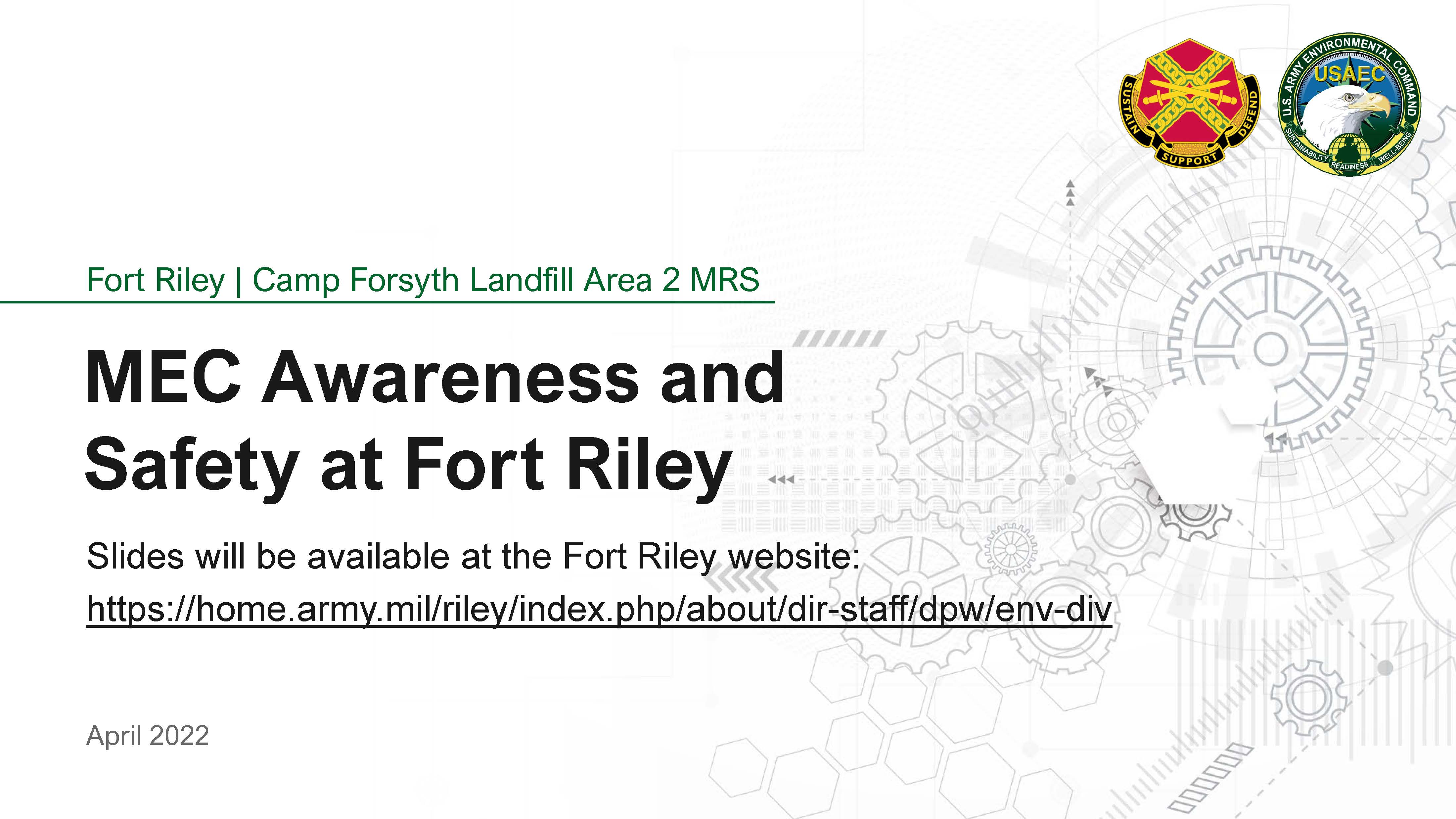Polyfluoroalkyl Substances (PFAS)
Camp Forsyth Public Meeting Presentation - April 7, 2022
A Free Pocket Guide of Fort Riley's Hazardous Plants and Animals
The Fort Riley Military Installation is a 101,000 acre military training facility located between Junction City and Manhattan in the Flint Hills of northeastern Kansas. It is one of the largest publicly owned tallgrass prairie tracts in the United States. Not only does the installation offer state of the art training for our country's soldiers, it also provides some of the best outdoor recreational opportunities in the state. Any time spent outdoors, either for training or recreation, should be spent cautiously as many animals and plants could be potentially hazardous.
A free pocket guide of Fort Riley Hazardous Plants and Animals is now available through the Fort Riley Directorate of Public Works (DPW)-Environmental Division. The purpose of the pocket guide is to help individuals identify and understand those hazardous plants and animals found on Fort Riley and the surrounding area. Copies of the pocket guide may be acquired at the DPW Conservation Office located at 407 Pershing Court on Main Post. Questions or concerns about hazardous animals or plants on Fort Riley should be directed to the DPW Conservation Office by calling 785-239-6211.
Publications






